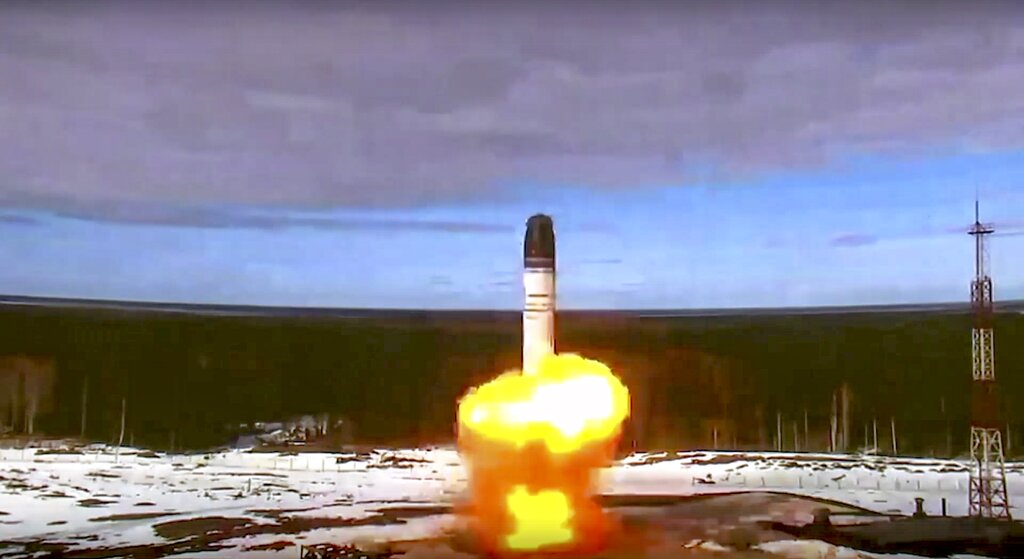Seemingly unfazed by the cost of its war in Ukraine, Russia has just announced that it will introduce a new long-range intercontinental ballistic missile (ICBM) by autumn this year.
Dmitry Rogozin, chief executive of the Russian Federal Space Agency Roscosmos, told Telegram on Sunday that Russia would soon put into service 50 Sarmat intercontinental ballistic missiles. He added that the delivery of weapons systems is expected by the end of autumn.
Rogozin, quoted by Russian news agency Interfax, also said the heavy intercontinental ballistic missiles, which could carry several hypersonic Avantgard warheads at the same time, which would be manufactured in Krasnoyarsk. The Avantgard warheads can launch from the main Sarmat rocket, and strike different locations, making interception even more difficult. The first test launch of Sarmat was carried out in late April at the Plesetsk experimental spaceport in Arkhangelsk Oblast.
According to the Russian Defense Ministry, the carrier will be able to transport several warheads to anywhere in the world, whether through the North or South Pole. The first units will be deployed in Krasnoyarsk, Siberia.
News tha the RS-28 Sarmat (NATO reporting name SS-X-29 or SS-X-30) was under development was first announced in 2014, and it was one of the six new strategic weapon types presented in 2018 to President Vladimir Putin.
The Sarmat is meant as a replacement of the R-36M ICBM, with the previous name featuring the NATO reporting name of SS-18 Satan, hence the new one is colloquially referred to as “Satan-II.”
According to available specifications, the silo-launched missile has a top speed of Mach 6.7 (8,273 km/h or 5,140 mph), a range of 18,000 kilometers (11,000 miles) and can carry an unspecified number of warheads, with experts speculating that this number ranges between 10 and 15.





